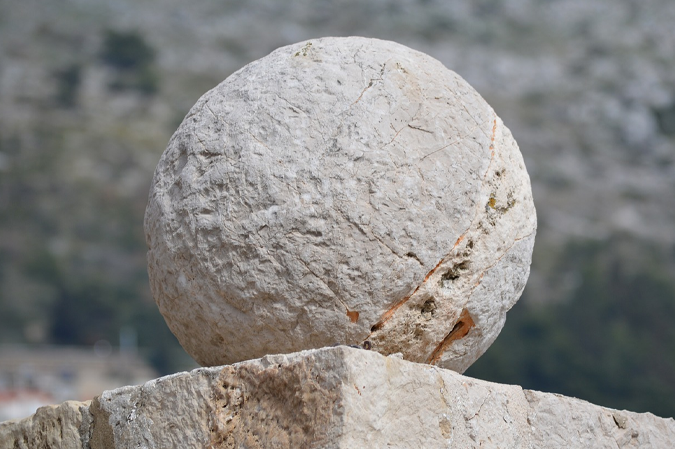In the lush, verdant landscapes of Costa Rica, a captivating mystery lies hidden among the trees and rolling hills: the Stone Spheres of Costa Rica. Known locally as bolas de piedra, these nearly perfect spheres have intrigued archaeologists, historians, and travelers alike since their discovery in the 1930s. Their origins, purpose, and the culture that created them remain shrouded in enigma, inviting us to explore their fascinating story.
The Discovery of the Spheres
The adventure began in the 1930s when workers from the United Fruit Company were clearing land for banana plantations in the Diquís Delta region. As they bulldozed through the dense jungle, they stumbled upon these massive stone spheres scattered across the landscape. Initially thought to be mere curiosities or obstacles, these spheres quickly caught the attention of archaeologists and researchers who recognized their potential historical significance.
The first scientific investigation was led by Doris Stone, daughter of a United Fruit executive, who published her findings in 1943. Her work attracted the interest of Samuel Kirkland Lothrop from Harvard University’s Peabody Museum, who further explored the spheres and their context within ancient settlements. This marked the beginning of a long journey to understanding these remarkable artifacts.
The Characteristics of the Spheres
The Stone Spheres vary dramatically in size, with some measuring just 10 centimeters while others reach up to 2.57 meters in diameter and weigh as much as 15 tons. Most are crafted from a coarse-grained stone known as gabbro, while others are made from limestone and sandstone. Their spherical shape is strikingly uniform, showcasing an impressive level of craftsmanship that suggests advanced stone-working techniques employed by their creators.
These spheres are primarily found in four archaeological sites within the Diquís Delta and on Isla del Caño. The most notable site is Finca 6, where many of these spheres have been preserved due to being buried under layers of sediment for centuries23. This preservation has protected them from vandalism and environmental degradation, allowing researchers to study them in situ.
The Culture Behind the Spheres
The Stone Spheres are attributed to the Diquís culture, a pre-Columbian civilization that thrived between AD 700 and 1530 in southern Costa Rica. This society was characterized by its hierarchical structure, with evidence suggesting that these spheres were placed along pathways leading to the homes of chiefs or used in ceremonial contexts. However, despite extensive research, their exact purpose remains uncertain.
Some theories propose that they served as markers for agricultural cycles or astronomical observations, while others suggest they were symbols of social status among the elite. The alignment of certain spheres at Finca 6 has led some researchers to speculate about their astronomical significance, hinting at a complex understanding of celestial events by the Diquís people.
Myths and Legends
The mystery surrounding the Stone Spheres has given rise to numerous myths and legends. Some locals believe they originated from Atlantis or were crafted by nature itself. Other tales suggest that ancient inhabitants possessed a magical potion that allowed them to soften rock for easier shaping14. In indigenous cosmogony, particularly among the Bribri people, these spheres are referred to as “Tara’s cannon balls,” linked to a myth where Tara, the god of thunder, used them to drive away malevolent spirits.
These stories not only enrich our understanding of how ancient cultures viewed these artifacts but also highlight their significance within local folklore and spirituality.
Ongoing Research and Preservation
Research into the Stone Spheres continues today as archaeologists strive to uncover more about their origins and uses. Excavations at sites like Finca 6 have revealed not just spheres but also evidence of mounds and burial sites associated with ancient communities. This ongoing work aims to create a more comprehensive picture of life during the Diquís culture’s heyday.
The preservation efforts are crucial; many spheres have been damaged over time due to agricultural activities or vandalism. Some have even been removed from their original locations for use as decorative items in private gardens. Fortunately, efforts by local authorities and museums have helped protect these historical treasures, ensuring that future generations can appreciate their significance.
Conclusion: A Legacy of Mystery
The Stone Spheres of Costa Rica stand as a testament to human ingenuity and cultural complexity. While we may never fully understand their purpose or how they were created, they continue to inspire curiosity and wonder. As we explore these ancient artifacts, we are reminded of the rich tapestry of history woven into our world—a narrative filled with mysteries waiting to be unraveled.
Visiting these sites offers not just a glimpse into an ancient civilization but also an opportunity to reflect on our connection to history and our responsibility to preserve it for those who come after us. Whether you are an archaeologist seeking answers or a traveler drawn by intrigue, the stone spheres promise an adventure steeped in history and wonder.




